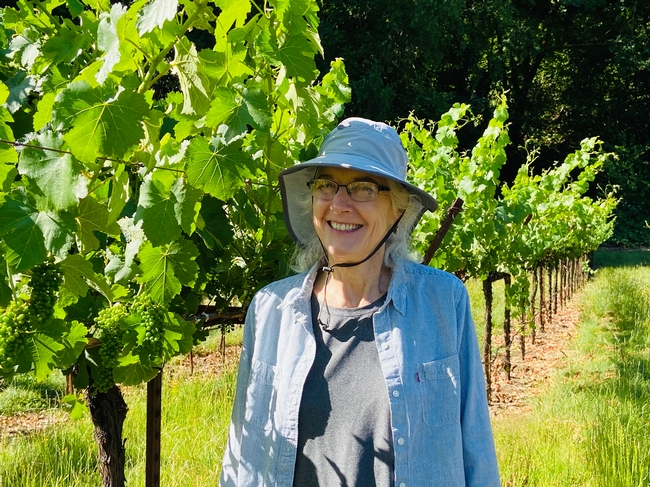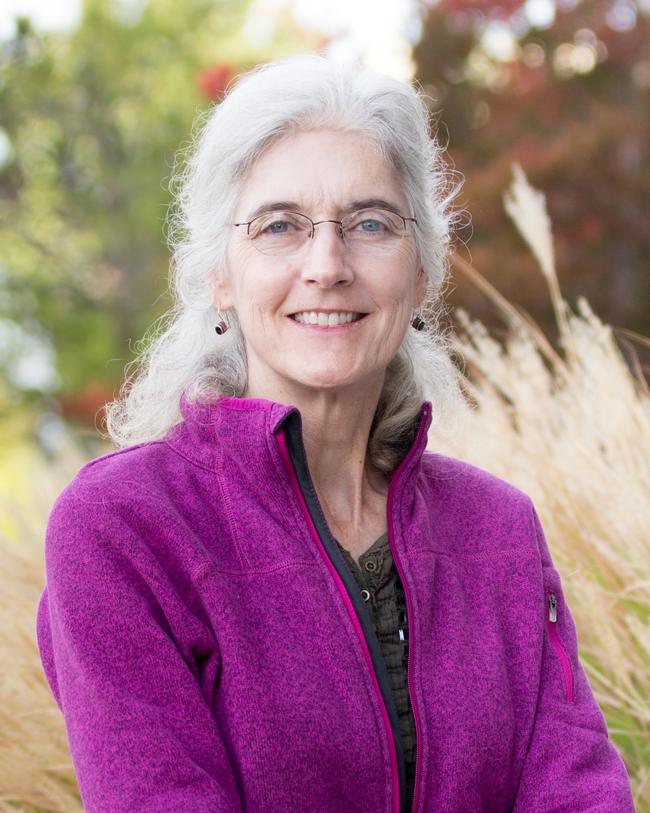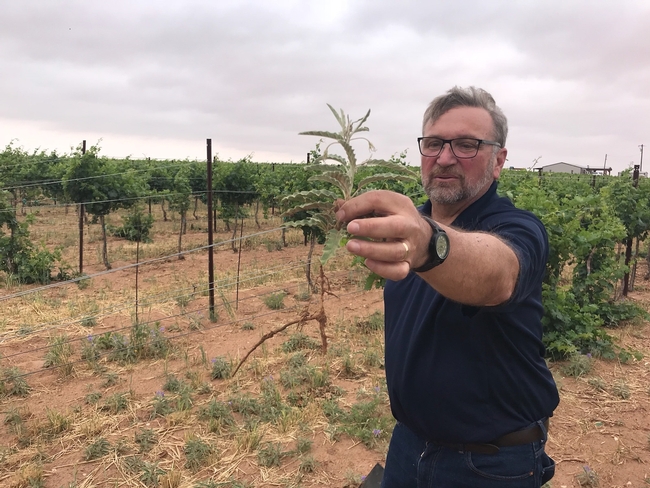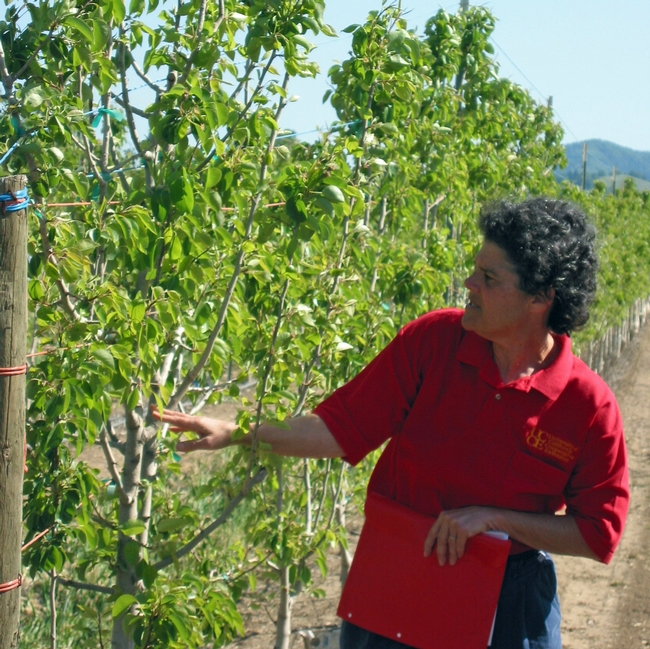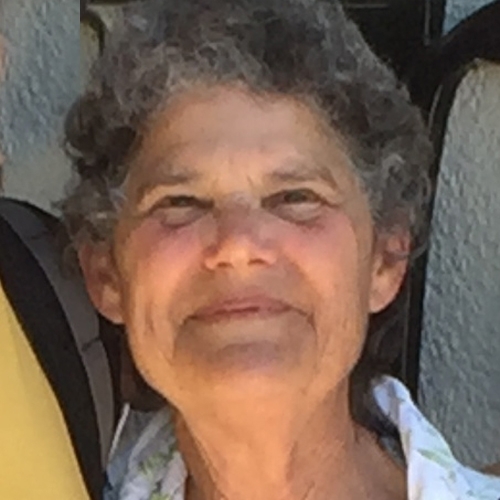Announcements
Rhonda Smith “heroine of the vineyards” wraps up career
Rhonda Smith, who has been heralded as the “heroine of the vineyards” for her groundbreaking work in helping combat the parade of problems that have plagued Sonoma County grapevines – and alarmed growers, plans to retire July 1.
During her nearly 34 years as a UC Cooperative Extension viticulture advisor, Smith steadily emerged as Sonoma County's expert on all things wine grape. Over the decades, her scientific know-how, meticulous research methodology and incredible work ethic advanced wine grape production in Sonoma County.
She cultivated working relationships with growers and vineyard managers, setting up field trials and collecting data in vineyards. As the years rolled by, she earned the respect and admiration of grape growers who wonder what they will do without her.
“Rhonda Smith became a true icon in Sonoma County viticulture for her timely research and her effective way of communicating valuable information to the wine grape industry,” said Santa Rosa grower Bob Dempel.
Tito and Janet Sasaki, who farm wine grapes in the Sonoma Valley, have benefited from Smith's dedication to the wine grape industry.
“Rhonda Smith is the quiet heroine of the vineyards in Sonoma County. She has been the family physician of Sonoma County vines for more than three decades,” said Tito Sasaki, past president of Sonoma County Farm Bureau.
Janet Sasaki said, “Rhonda is the hardest working person I know. My friends and I have been working with her since 1989. No vineyard is too small for her to take an interest in the problem. She is very respected by everyone in the wine grape industry.”
While earning a B.S. in plant science with an emphasis in plant pathology, and an M.S. in horticulture with an emphasis in viticulture, both at UC Davis, Smith was inspired by former UC Davis plant pathologist Mary Ann Sall and Cooperative Extension farm advisors who collaborated on research to combat diseases that were costing farmers money.
“My goal has always been to assist the industry in successfully navigating the delicate balance between grape quality and economically acceptable crop yields – the essential combination to prosper as a premium grower of wine grapes,” she said.
When Smith arrived in Sonoma County in 1986, phylloxera was fast becoming the largest challenge to grape growers. The aphid-like insect feeds on grapevine roots, stunting vine growth and reducing yields. Eventually thousands of acres in the North Coast needed to be replanted. “Growers had no idea how phylloxera-resistant rootstocks would perform,” she said. Over the years, Smith and UC Davis scientists launched 10 trials to inform growers of the suitability of specific rootstocks in sites with heavy, cracking clay, wet soil conditions and high nematode populations.
Introduced insect pests – particularly vine mealybug – have been a challenge for growers, who must control them and take steps to prevent transporting the pest to other vineyards. Smith and now-emeritus UC IPM advisor Lucia Varela conducted trials to evaluate the survival of vine mealybug in unfermented winery waste.
“We learned that not only could the insects survive the press, but they could walk off uncovered piles of stems,” Smith said. Their research changed how wineries and growers handle fresh winery waste.
Smith also collaborated with other UCCE specialists, UC faculty and USDA researchers to investigate the cause of physiological disorders such as berry shrivel, Syrah disorder and pinot leaf curl, the latter causing severely stunted shoots, and partial shoot dieback in different cultivars of Pinot.
“Many growers believed the abnormal growth was due to fungal infections,” she said, “but we were able to associate pinot leaf curl to a temporary nitrogen-related disorder, which meant that applying a fungicide would not prevent the problem.”
“It's been fun and rewarding to be part of the Sonoma County wine industry for so many years,” Smith said.
Read Tim Tesconi's full story in the July edition of Sonoma-Marin Farm News: https://sonomafb.org/farm-news-archives.
Aguiar completes journey from farm worker to farm advisor
Jose Luis Aguiar, who has been working as a vegetable crops small farm advisor for the University of California Cooperative Extension in the Coachella Valley in Riverside County since 1992, will retire on July 1, 2020.
"My job is one of the best jobs in the world. I enjoy the research and education that we provide our community. From the beginning, there was so much to learn, and it has been that way every day on the job," Aguiar said.
What started many years ago to help his family economically became a passion turned into a career. He was 12 years old when he started working alongside his father in the Coachella Valley agricultural fields.
"When all my friends went on vacation, I was going to work in the fields. It was my turn to sow asparagus. Harvesting okra I did not like at all because you have to put on a long shirt, because pollen scratches you a lot; it is a very difficult crop to harvest," Aguiar recalled.
Aguiar specializes in bell peppers, which was a great help in 2012. That year in the Coachella Valley, a microscopic worm called root-knot nematode infested the roots of peppers, threatening the 5,000 acres of this crop valued at $90 million. UCANR experts worked with farmers to understand why it was a problem there and not in other pepper growing areas.UC ANR pepper workgroup to research these problems came about.
“Meeting with the small scale producers, I had a list of 12 or 15 problems,” Aguiar said. “I started to speak with other advisors about having a conference for limited-scale producers where we could present them with research-based information. I invited all the small farmers, and we covered production problems, insect and disease problems, postharvest and even marketing of their particular crops."
For Aguiar, who earned his bachelor's degree in vegetable crops at UC Davis and graduated from the highly regarded California Agricultural Leadership Program in 2010, his professional journey has been one of learning and giving back to the community where he grew up.
He expressed the essence of his 20 years of passion at work: "I have enjoyed presenting research-based information to farmers and pest control advisers. I have enjoyed walking in many fields and seeing and hearing about the problems firsthand. I have enjoyed working with the small farmers, addressing some of the issues, such as producing a crop with a limited budget. I have enjoyed collaborating with many UC farm advisors, specialists and the local agencies involved in agriculture. I have enjoyed working with groups working on community gardens."
Aguiar recognizes that there is too much left to be done. But right now, all those small farmers, field workers and community organizations who have had the opportunity of working with Aguiar have been wishing him the best in his new chapter in life.
UC Cooperative Extension weed advisor John Roncoroni retires
After 38 years of service, John Roncoroni, UC Cooperative Extension advisor specializing in vineyard weed management in Napa County, plans to retire July 1.
Over the years, Woodland native Roncoroni has become a trusted resource for weed management research and extension, not only in the North Coast, but throughout California, which is home to 500,000 acres of premium winegrapes. He is known for his research on conventional and organic herbicides, hedgerows in vineyards, irrigation pond weed control, and sheep for grazing weeds in commercial trees and vines.
“Over the years working with John Roncoroni, I experienced firsthand his dedication, passion and knowledge to educate farmers and agricultural workers – both in English and Spanish – about best management practices to control and eradicate invasive weeds and weeds of concerns for the agricultural industry. John will be missed greatly by the agricultural industry and by the people whose lives he touched,” said Jose Chang, Monterey County assistant agricultural commissioner and former deputy agricultural commissioner in Napa County.
After earning a B.S. in environmental policy analysis and planning with an emphasis in agriculture at UC Davis, Roncoroni began his career as a UC Davis postgraduate researcher in 1983, then became a staff research associate working with other weed scientists in crops, forest and rangelands. He earned an M.S. in horticulture at UC Davis in 1999.
“It was my 20-year association with UCCE weed specialist Clyde Elmore that set me on the path to becoming a UCCE weed science advisor,” Roncoroni said. While collaborating on a USDA-funded project to investigate chemical and non-chemical alternatives to methyl bromide, he learned about biofumigation and other alternative pest control methods.
From 2003 to 2007, Roncoroni served as IR-4 Field Research Center director, testing pesticides to be submitted for EPA registration.
In 2007, when Roncoroni joined UC Agriculture and Natural Resources as a UC Cooperative Extension advisor in Napa County, most conventional grape growers used glyphosate, or Roundup, for the weed control.
“In fact, Roundup only was considered the most sustainable weed management method,” Roncoroni said. “This overreliance on glyphosate resulted in biological resistance by weeds.”
He taught growers about alternative herbicides and non-chemical weed control methods and how to make these methods more effective. Little did he know that this research would become even more valuable when some consumers began to object to glyphosate use.
Roncoroni shares his research results through field days, trade publications and newsletters. He was the lead author of the weed management section of the UC IPM Grape Pest Management guidelines.
“My biggest impact came through in-person presentations,” Roncoroni said. “This is where I gained the trust of the California wine grape industry. He has traveled throughout the state and to Colorado, Texas and Oregon to share his knowledge.
Because he has studied weed management in a broad array of environments, Roncoroni is often asked by UCCE colleagues to give weed control tips to different audiences ranging from golf course turf managers to small-scale Mien strawberry farmers.
“Over the years I have had the opportunity to work on weed control in forestry, rangeland, row crops, alfalfa, fruit and nut trees but it was my early training in weed management in turf and ornamentals, mulches and alternative weed control that added to my effectiveness in teaching weed control to urban audiences and to training UC Master Gardeners,” said Roncoroni, who has trained more than 1,700 UC Master Gardener volunteers in weed identification, biology and management.
Roncoroni's expertise has been recognized by the California Sustainable Winegrowing Alliance, which asked him assist in writing their standards for sustainable winegrowing, and the California Department of Pesticide Regulation, which asked him to serve on its Pest Management Advisory Committee. In 2018, the California Weed Science Society named Roncoroni an Honorary member, its highest honor.
UCCE pear expert Rachel Elkins retires from 33-year career
Rachel Elkins, UC Cooperative Extension pomology farm advisor for Lake and Mendocino counties, plans to retire from UC July 1 after 36 years, 33 years in her current position.
“Rachel has been invaluable to the pear industry in Mendocino and Lake counties,” said Bob McClain, California Pear Advisory Board's field and research director.
The Richmond native's first UC job was as a typist at UC Berkeley. Elkins was introduced to UC Agriculture and Natural Resources after earning a bachelor's degree in international studies at University of the Pacific and bachelor's degree in agricultural pest management at UC Berkeley, then landing an internship with UCCE integrated pest management advisor Bill Barnett in Fresno County in 1982. After earning two master's degrees, in pomology and plant protection and pest management at UC Davis, Elkins joined UC Cooperative Extension as a farm advisor intern in 1986 and was hired as a farm advisor in Lake and Mendocino counties in 1987.
“I began with zero knowledge about pear production, my main assigned crop,” Elkins said. “From this beginning, I dived in; I am still learning every day. I am fortunate to have developed close working relationships with UC, industry and colleagues in Oregon and Washington, as well as other states and countries where pears are grown.”
She co-edited and co-authored the 2007 UC Pear Production and Handling Manual, 1999 UC Integrated Pest Management for Apple and Pear, and UC IPM Pear Pest Management Guidelines. Her most recent co-authored article on predatory phytoseiid mites, detailing work completed in 2008 was just published in California Agriculture journal.
Elkins is well-known for her research to control codling moth populations by interfering with the insect's sex life instead of using insecticides. In 1996, she worked with UC Riverside researcher Harry Shorey to introduce the pheromone ‘puffer,' fashioned after the devices in public restrooms that intermittently emit a fragrance. Releasing pheromones confuses male moths seeking mates. The method proved successful and ideal in large-scale management because as acreage increases the number of units needed per acre decreases. As a result, organophosphate insecticide use for codling moth control in many pear orchards has almost entirely ceased.
“She was instrumental in developing pheromone puffers for codling moth control,” McClain said, noting that pheromones distributed in orchards on plastic ties were hung by hand 200 per acre. “With the puffer, you needed two per acre, which saved on labor costs.”
A 2003 UC cost study showed that the pheromone puffers saved growers $9 per ton or nearly $200 per acre, based on 20 tons per acre. The cost savings came from reduced insecticide use – due to fewer outbreaks of secondary pests such as mites and pear psylla – and less need to operate spray equipment, which was becoming increasingly expensive.
The California Department of Pesticide Regulation honored the pheromone puffer project with its 2000 IPM Innovator Award. The puffer is now used on nearly all the pear acreage in Lake County. This success in pears led to its use in apple and walnut orchards.
“The most gratifying part of the puffers' success is that I put myself out of the codling moth control business and was able to devote more time to horticulture,” she said. “For example, developing modern orchard systems amenable to mechanization, finding alternatives to antibiotics for fire blight control, and joining multistate efforts toward breeding size-controlling rootstocks.”
In 2002, Elkins was named Agriculture Person of the Year by the Lake County Farm Bureau.
Although pears are her specialty, she has worked with growers on more than 25 fruit and nut crops, mainly walnuts, but also apples, kiwifruit, olives and wine grapes.
“My walnut research program has greatly increased in the past decade as higher prices and organic markets have led to new Lake County plantings,” she said. “I established four long-term rootstock trials in 2011-2012, which are providing local growers with important data to decide whether to replace seedling Paradox with newer clonal selections.”
In 2015, she received the American Society for Horticultural Science award for Outstanding Extension Education Materials for producing the video “Budding, Grafting and Planting Walnut Trees in the Field,” a labor of love honoring renowned Lake County nurseryman Alex Suchan.
She has also covered environmental horticulture and, in 1993, started the UC Master Gardeners Program in Lake County, which is still going strong today.
In addition to her research, Elkins has served as UCCE director in Lake County, from 2002 to 2006 and again from 2018 to the present, maintaining excellent relationships with local government officials and partnering with county departments.
Elkins has been granted emeritus status by UC ANR and will continue ongoing research trials. She will return part-time funded by the California Pear Advisory Board and Pear Pest Management Research Fund to continue assisting the statewide pear industry, including as UC ANR commodity liaison.
“I am very glad to work part-time doing pure farm advisor work, which is what I love and why I entered this profession,” Elkins said.
In memoriam: Marjorie Hoy
Marjorie Hoy, first woman faculty member of the UC Berkeley Department of Entomology, died on Friday June 19, 2020, in Colorado. She was 79. Details about the cause of her death are still developing, but her passing was unexpected, according to Vernard Lewis, her former UC Berkeley Rausser College of Natural Resources colleague and emeritus UCCE urban entomology specialist.
Hoy is internationally recognized for her groundbreaking research with the first laboratory-modified natural enemy used in a pest management program. For biological control of spider mites in almond orchards, Hoy and her team selected western orchard predatory mites for resistance to three pesticide classes. At the time, the biological control program saved almond growers an estimated $20 million a year.
“It reduced acaricide rates dramatically from three times a season to one-tenth the label rate and mostly spot treating,” Hoy said in a 2019 interview with American Entomologist. “I give lots of credit to the Cooperative Extension folks in California; they would help me find cooperative growers.”
Hoy attended the University of Kansas as a National Merit Scholar and graduated Phi Beta Kappa with a B.A. in zoology and entomology in 1963.
“Dr. Hoy was an exceptionally talented and rare individual who spent considerable time in CNR,” Lewis said. “She received her M.S. (1966) and Ph.D. (1972) in the former Department of Entomology. Time to completing her Ph.D. was phenomenal, 1.5 years – a record! After leaving briefly for a post doc position in Connecticut, she returned to CNR as an assistant professor in the Department of Entomology in 1976. She achieved the rank of full professor six years later. In 1992, she accepted the Davies, Fischer and Eckes Endowed Chair in Biological Control at the University of Florida.”
In 2015, she retired as Professor Emerita of Biological Control at the University of Florida.
“Dr. Hoy was a pioneer in insect molecular genetics, in particular as it applied to biological control and agricultural acarology,” Lewis said. “Her book, Insect Molecular Genetics, is considered a classic. Her publication list is lengthy, at least 159 peer-reviewed articles and 53 book chapters and books.”
By some estimates, Hoy's research has been cited as many as 12,000 times, according to Lewis and retired USDA Forest Service scientist Michael Haverty.
As a professor, Hoy was an advisor and mentor to 12 master's students, 15 Ph.D. students, as well as 20 postdoctorate researchers, with many achieving successful academic careers.
“She was a knowledgeable and dynamic instructor, as well as an advocate for increasing diversity among students and academic hires in entomology,” Lewis said.

